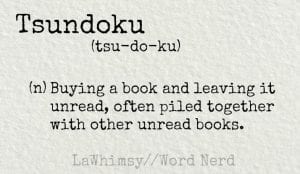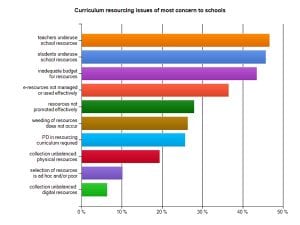School libraries (SL) are more than books on shelves. To a fledgling teacher librarian (TL), libraries often imagine warehouses, where books awaits death and then reincarnation at Lifeline. The reality is different; collections are not inert. SL are dynamic; they constantly evolve to suit the needs of their community.
What makes a SL so dynamic? Well, like any organism, it’s all in the DNA, or for SL, it’s in the Collection Development and Management Policy (CDMP). The CDMP is the DNA of a SL and contains strategic data for growth in today’s splurge and is flexibliity in tomorrow’s freeze. If the DNA of a SL is without clear direction and missing data, then its ability to thrive, or even survive is in jeopardy. Consequently, TL need to be aware of the duality of a CDMP that prepares the collection for today’s needs, and tomorrow’s growth.
A school CMDP exists primarily to address the curriculum, the teaching and learning needs of its community as well as provide well-being (IFLA, 2015; ASLA & VCTL, 2018). Therefore, the policy needs to clearly reflect those needs when framing the purpose, selection principles, acquisition and censorship procedures. Along with other maintenance endeavours such as deselection and collection evaluation; all whilst staying within budget, bolstering literacy and well-being. It is not a small task and definitely not for the faint hearted. But then TL are not faint hearted (Templeton, 2019a).
The development and management of a collection involves many facets.
- Understanding the information evolution and its implications on education and wider society is crucial. TL need to be aware that previous resource acquisition has evolved now into information facilitation paradigm (Kelly, 2015). With publishers rapidly changing their delivery from print to digital formats (Templeton, 2019b), the repercussions on formats and licencing are momentous.
- Being able to select resources using criteria to ensure the collection is balanced and addresses the needs of the community. (Templeton, 2019a)
- Knowledge of how resources may be packaged for cost efficiency, and evaluating that against the value of each of those titles is a challenging task (Templeton, 2019c; Templeton, 2019d. (Module 2 – Online Access) (Module 2 – Bundling together)
- Being able to manage collections thriftily is necessary when SL budgets are constantly squeezed (Softlink, 2018; Templeton, 2019e).
- Information literacy is an essential aspect of future focused learners (MCEETYA, 2008). The CDMP policy needs to make provision for information literacy to ensure that students have the skills to access and utilise the collection. The inclusion of literacy programs only further strengthens a SL position within a school (Templeton, 2019l; Templeton, 2019f). .
- Awareness of censorship and its role in SL (Templeton, 2019g).
- Linking budget to student population is an effective manner to secure funds that suit the growth/decline of the school community (IFLA, 2015, p.6) versus being dependent on yearly fixed sums.
Besides building a collection, a CDMP contains procedures that maintains its value and its ability to service the needs of their community.
- Measuring outputs and outcomes are useful in analysing the effectiveness and efficacy of a collection (Templeton, 2019h).
- Being able to link the collection value to qualitative and quantitative data validates the collection and program (Templeton, 2019i). A recent study by Sutton et al., (2017) show that altmetrics are useful in the evaluation of collections. Power (2019) suggests that both qualitative and quantitative methods are used.
- Linking educational outcomes to collections as evidence for continuing financial support for resources, especially digital subscriptions, is judicial. Journal subscriptions are very expensive and a TL would need to prove value if there is insufficient evidence to indicate positive outcomes (Jubb et al., 2017). Journal databases, like many other electronic resources, may be economical up front, but often require long term subscription.
Technology is rapidly changing and consequently now, the same information is available in multiple formats. TL need to be aware of this paradigm when committing to subscription resources as it is more than just a commitment for the current cohort of students (Anderson, 2008). It is a financial commitment for future generations.
A strong CDMP ensures that a library collection addresses the needs of their community, and the rewards are high resource outputs and user outcomes. What TLs all over the world do not want are libraries with numerous books that are not utilised or under utilised. Tsundoku is the affliction of purchasing resources that no one uses (Templeton, 2019j).
An unused collection is an ineffective collection. It is very hard to justify a collection that has failed to prove their value their community. It is even harder to justify the presence of TL with a collection that is not relevant.
REFERENCES for BLOG
Anderson, R. (2008). Future proofing the library; Strategies for acquisitions, cataloguing and collection development. The Serials Librarian. 55 (4). doi:10.1080/03615260802399908
ASLA & VCTL (2018). A manual for developing policies and procedures in Australian school library resources centres 2nd Edition. ALIA. Retrieved from https://asla.org.au/resources/Documents/Website%20Documents/Policies/policies-procedures-manual_ed2.pdf
IFLA (2015). School library guidelines. Retrieved from https://www.ifla.org/files/assets/school-libraries-resource-centers/publications/ifla-school-library-guidelines.pdf
Jantti, M., and Cox, B. (2013). Measuring the value of library resources and student academic performance through relational datasets. Evidence Based Library and Information Practice. 8 (2), 163-171. {Conference Paper}
Jubb, M., Rowlands, I., and Nicholas, D. (2013). Values of libraries: Relationships between provisions, usage, and research outcomes. Evidence Based Library and Informative Practice. 8(2), 139-152 {Conference Paper}
Kelly, M. (2015). Collection development policies in public libraries in Australia: A qualitative content analysis. Public Library Quarterly. 34, 44-62
MCEETYA (2008) Melbourne Declaration on Educational Goals for Young Australians. Curriculum Corporation. Australia. Retrieved from http://www.curriculum.edu.au/verve/_resources/national_declaration_on_the_educational_goals_for_young_australians.pdf
Power, K (2019) Forum 5.1 – Methods of Collection Analysis. ETL503 Discussion Forum. CSU. Retrieved from https://interact2.csu.edu.au/webapps/discussionboard/do/message?action=list_messages&course_id=_42383_1&nav=discussion_board_entry&conf_id=_78886_1&forum_id=_147540_1&message_id=_2304873_1
Softlink (2018) Australia and New Zealand school library survey. Retrieved from https://www.softlinkint.com/downloads/2018_Softlink_Australian_and_New_Zealand_School_Library_Survey_Report.pdf
Sutton, S., Miles, R., and Konkiel, S., (2017) Is what’s “Trending” whats worth purchasing? Insights from a national study of collection development librarians. The Serials Librarian. Vol 72 (1-4) pp.134-143. DOI 10.1080/0361526X.2017.1297593
Templeton, T. (2019a) Benign or Malignant. Trish’s trek into bookspace. Retrieved from https://thinkspace.csu.edu.au/trish/2019/03/24/benign-or-malignant-how-do-you-diagnose/’
Templeton, T. (2019b) Shatzins files – publishers to perish. Forum 1.1. ETL 503 Discussion Forums. CSU. Retrieved from https://interact2.csu.edu.au/webapps/discussionboard/do/message?action=list_messages&course_id=_42383_1&nav=discussion_board_entry&conf_id=_78886_1&forum_id=_147529_1&message_id=_2152285_1
Templeton, T. (2019c) Online access. Forum 2.3. ETL 503 Discussion Forums. CSU. Retrieved from https://interact2.csu.edu.au/webapps/discussionboard/do/message?action=list_messages&course_id=_42383_1&nav=discussion_board_entry&conf_id=_78886_1&forum_id=_147533_1&message_id=_2185290_1
Templeton, T. (2019d) Bundling resources. Forum 2.3. ETL 503 Discussion Forums. CSU. Retrieved from https://interact2.csu.edu.au/webapps/discussionboard/do/message?action=list_messages&course_id=_42383_1&nav=discussion_board_entry&conf_id=_78886_1&forum_id=_147533_1&message_id=_2185169_1
Templeton, T. (2019e) Module 3 – Managing collections thriftily. Trish’s trek into bookspace. Retrieved from https://thinkspace.csu.edu.au/trish/2019/04/20/managing-collections-thriftily/
Templeton, T. (2019f) Module 5.3a– Information literacy. Trish’s trek into bookspace. Retrieved from https://thinkspace.csu.edu.au/trish/2019/05/21/module-5-3a-information-literacy/
Templeton, T. (2019g) Modules 2 & 6 0 13 reasons why – censorship and selection. Trish’s trek into bookspace. Retrieved from https://thinkspace.csu.edu.au/trish/2019/03/12/13-reasons-why-censorship-and-selection/
Templeton, T. (2019h) Forum 3.1. ETL 503 Discussion Forums. CSU. Retrieved from https://interact2.csu.edu.au/webapps/discussionboard/do/message?action=list_messages&course_id=_42383_1&nav=discussion_board_entry&conf_id=_78886_1&forum_id=_147536_1&message_id=_2249448_1
Templeton, T. (2019i) Module 5.1 – Evaluating the collection.- Keeping it real. Trish’s trek into bookspace. Retrieved from https://thinkspace.csu.edu.au/trish/2019/04/29/evaluating-the-collection-keeping-it-real/
Templeton, T. (2019j) Module 1 – Library collections. Trish’s trek into bookspace. Retrieved from https://thinkspace.csu.edu.au/trish/2019/03/11/library-collections/
Templeton, T. (2019k) Module 1 – Curriculum + information + access = Superhero. Trish’s trek into bookspace. Retrieved from https://thinkspace.csu.edu.au/trish/2019/03/13/curriculum-information-access-superhero/
Templeton, T. (2019l) Reluctant readers – would fact be better than fiction? Trish’s trek into bookspace. Retrieved from https://thinkspace.csu.edu.au/trish/2019/03/11/reluctant-readers-would-facts-be-better-than-fiction/















